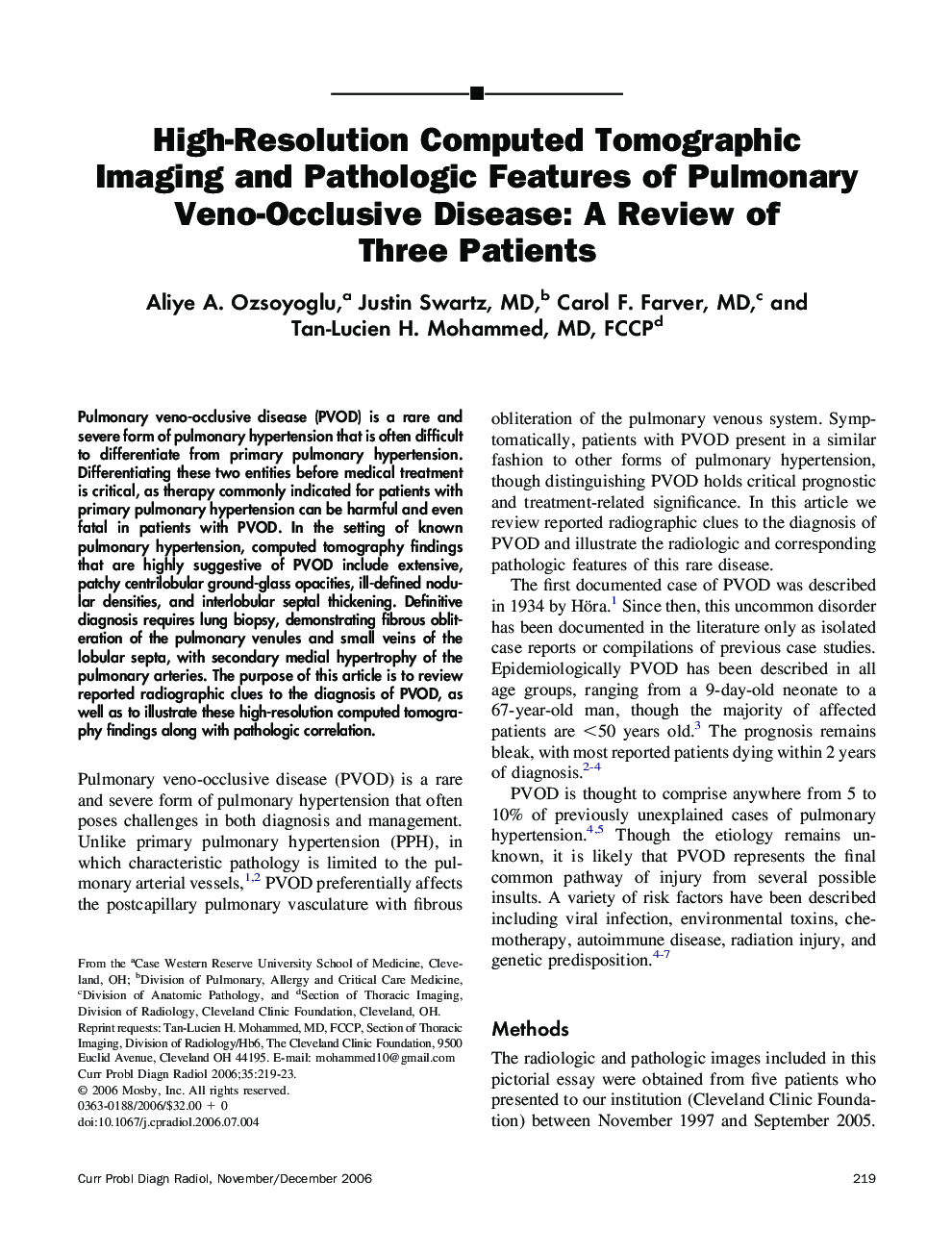| Article ID | Journal | Published Year | Pages | File Type |
|---|---|---|---|---|
| 4223803 | Current Problems in Diagnostic Radiology | 2006 | 5 Pages |
Pulmonary veno-occlusive disease (PVOD) is a rare and severe form of pulmonary hypertension that is often difficult to differentiate from primary pulmonary hypertension. Differentiating these two entities before medical treatment is critical, as therapy commonly indicated for patients with primary pulmonary hypertension can be harmful and even fatal in patients with PVOD. In the setting of known pulmonary hypertension, computed tomography findings that are highly suggestive of PVOD include extensive, patchy centrilobular ground-glass opacities, ill-defined nodular densities, and interlobular septal thickening. Definitive diagnosis requires lung biopsy, demonstrating fibrous obliteration of the pulmonary venules and small veins of the lobular septa, with secondary medial hypertrophy of the pulmonary arteries. The purpose of this article is to review reported radiographic clues to the diagnosis of PVOD, as well as to illustrate these high-resolution computed tomography findings along with pathologic correlation.
